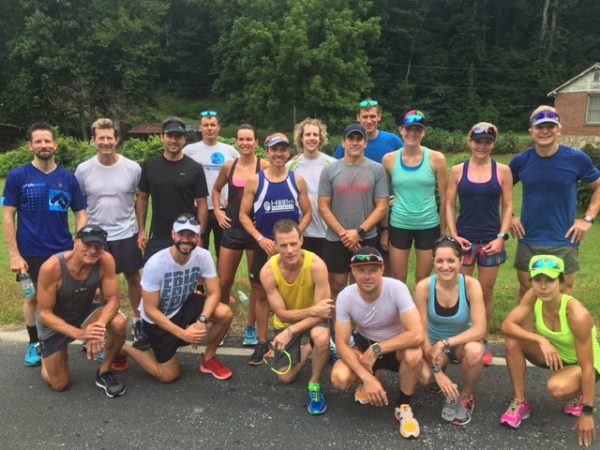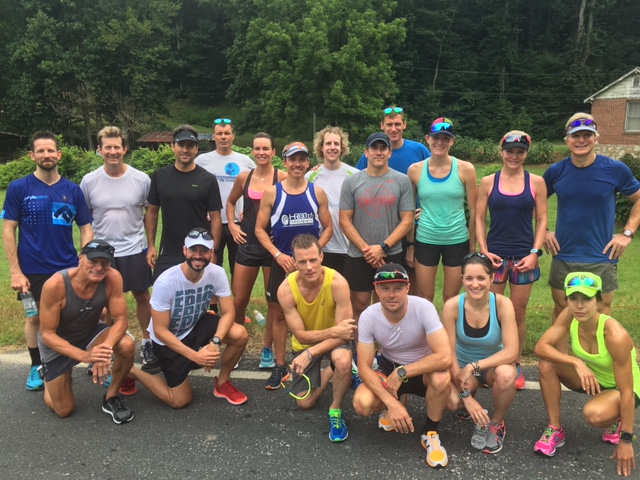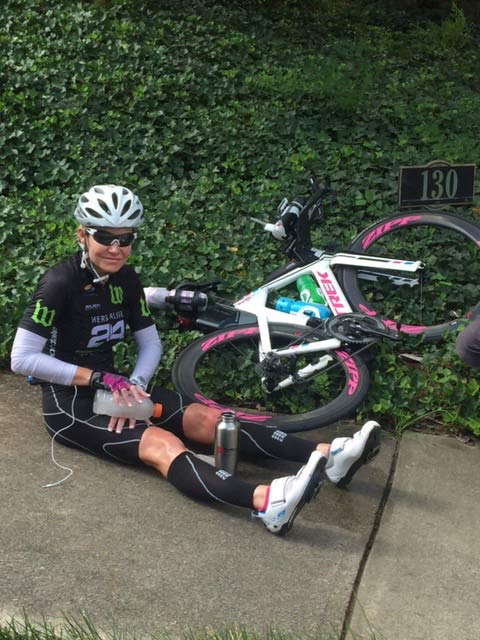Breaking 4 Bad Run Habits in Triathlon

Whether you come to triathlon as an experienced runner or are new to running, triathlon is not about how well you run but how well you swim, bike and run off the bike. Since running is the last of the three sports on race day, it happens to be where many race day disasters occur such as cramping, GI distress, and exhaustion. Naturally, athletes blame their run fitness on an unfavorable outcome and vow to place a greater emphasis on run training. However, a triathlete’s run performance is directly influenced by the swim and the bike which both precede the run. Inadequate overall fitness, improper pacing and execution, and nutritional issues on the swim and bike ultimately affect the run. How do we prevent the run from getting the blame and become a better triathlete with a strong run? Read on to learn the common bad run habits triathletes make and the fix.
Bad Run Habit #1:
Increasing running volume too quickly.
Triathletes like to equate total miles run as a successful training program.
In an effort to build a run base and improve on the run many athletes take on too much volume and intensity way too quickly. Running is the most corrosive of the three sports because it is fully weight bearing and therefore creates high levels of muscular damage, which increases the risk of injury.
The Fix- Consistency, and Frequency:
Consistency and frequency are the most effective ways to improve run fitness and muscular resilience. No one quality run session trumps consistency and frequency. The most effective way to train the body to run well off the bike is to frequently run off the bike. Commit to two short (10-15 min) bricks (run off the bike), one run focused on strength or race efforts, and one run super easy with the focus on great form. The bricks can include some short efforts at race pace with equal amounts of easy running between.
Bad Run Habit #2:
Run training lacks specificity.
One of the biggest mistakes triathletes commonly make is running at a moderately hard to hard effort for almost 100% of their runs. While the theory here is to get comfortable at a faster pace, in truth this contributes to fatigue, muscular damage, and prevents the athlete from being about to hit those high intensities, hence stagnating fitness gains.
The Fix – Specificity:
Balancing the swim, bike and run workouts can be tricky. To improve as a runner with a limited amount of training time, add specificity to your workouts by running at both low and high intensities. Don’t be afraid to run super easy when the training plan calls for easy. These lower stress runs build resilience – which makes you stronger without unnecessary breakdown.
Bad Run Habit #3:
Poor running form:
Triathletes are notorious for seeking help with swim mechanics and proper bike fits but place no value on run efficiency and form. As it turns out, running well is about efficiency – using as little energy as possible and letting gravity chip in. Running with poor form increases energy output, reduces the pace and fatigue sets in.
The Fix: Run Mechanics
Rather than placing emphasis on duration and number of miles accumulated, you will become a faster runner simply by implementing the following:
Form and posture:
To increase the return on your training efforts, ensure the miles that you run are with proper form and posture. What is the proper run form?
- Posture – running tall, shoulders square and relaxed
- Forward lean- from your ankles (not waist) with shoulders in front of hips
- Arm carriage – compact arms with elbows bent at 90 degrees or less, with 2/3rd of the arm swing occurring behind your body, 1/3rd in front with thumb swinging up toward armpit then back again. Arm swing should not cross over the body midline.
- Foot speed – we are most economical when we maintain foot turnover or cadence over the course of the run. Think-light on the feet, with fast foot turnover, minimizing the time the foot spends on the ground.
- Leg drive and propulsion – Along with a fast foot turnover is the leg drive. Propulsion (forward movement) is driven by strong, stable hips that drive the knee forward (not up), loading the landing foot/leg, then a strong push off with the back leg/foot. With each stride, momentum is created increasing economy.
Bad Run Habit #4:
Triathletes largely focus on the swim, bike, and run workouts with little emphasis placed on a strength-training regimen. As a whole, triathletes lack neuromuscular strength, balance, joint mobility, and power creating potential. Its no wonder we find ourselves injured from the run training. As previously mentioned but worth a reminder, running, as opposed to the swim and bike, creates muscular damage and increases the risk of injury – especially on a body that is functionally weak and lacks mobility.
The Fix – Functional Strength Training (FST):
While it may seem reasonable to overlook strength training given the time investment in the swim, bike and run workouts, FST holds the key to becoming a stronger, less injury prone, more resilient triathlete. However, how much you can squat or bench press is not going to improve your performance. A carefully tailored and progressive year round plan designed to evolve in tandem with your racing season improves coordination, muscle recruitment, mobility, power potential, strength, and resilience. Ultimately, FST unleashes your potential to become a better triathlete.
How a coach can help.
Whether you already have bad run habits or want to avoid them from the start, a coach can help.
Enlisting the guidance of a certified USA Triathlon coach is advantageous to any athlete as they launch into triathlons. Under the guidance of a USAT coach, the athlete will avoid pitfalls many athletes make as they tread on the unfamiliar territory of juggling the complexity of three sports all wrapped up into one. Not one size fits all, nor does one training plan fit the unique needs of each triathlete. Plus it’s nice to have a coach in the trenches alongside you.
Enjoy the journey of what promises to be a fun and rewarding ride.









